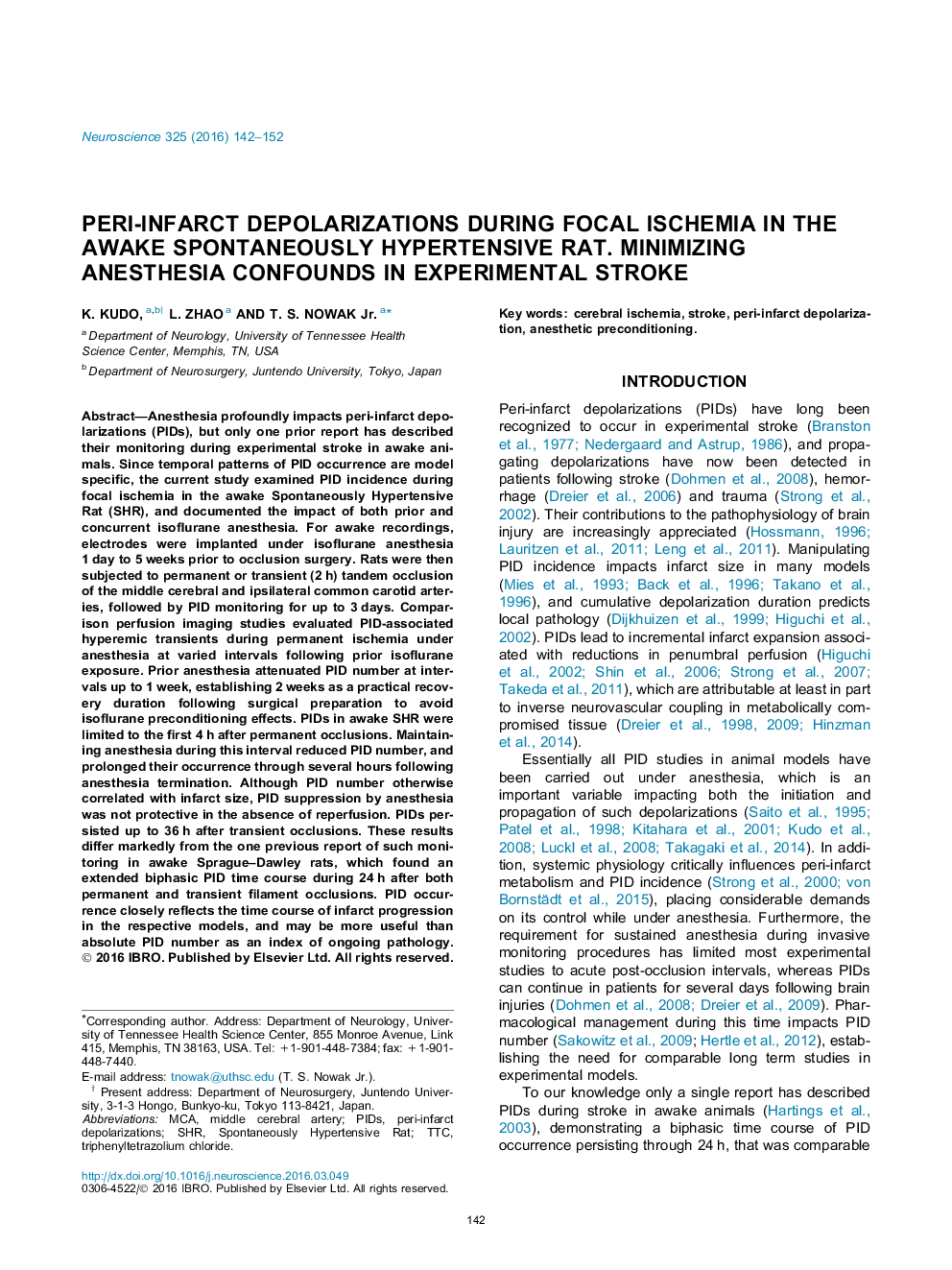| کد مقاله | کد نشریه | سال انتشار | مقاله انگلیسی | نسخه تمام متن |
|---|---|---|---|---|
| 4337363 | 1614751 | 2016 | 11 صفحه PDF | دانلود رایگان |

• Peri-infarct depolarizations (PIDs) were recorded in awake rats during stroke.
• Recovery for 2 weeks after electrode placement avoided anesthetic preconditioning.
• PIDs ceased within 4 or 36 h after permanent or transient occlusions, respectively.
• PID suppression by sustained anesthesia was not protective without reperfusion.
• PID time course coincides with infarct progression under varied model conditions.
Anesthesia profoundly impacts peri-infarct depolarizations (PIDs), but only one prior report has described their monitoring during experimental stroke in awake animals. Since temporal patterns of PID occurrence are model specific, the current study examined PID incidence during focal ischemia in the awake Spontaneously Hypertensive Rat (SHR), and documented the impact of both prior and concurrent isoflurane anesthesia. For awake recordings, electrodes were implanted under isoflurane anesthesia 1 day to 5 weeks prior to occlusion surgery. Rats were then subjected to permanent or transient (2 h) tandem occlusion of the middle cerebral and ipsilateral common carotid arteries, followed by PID monitoring for up to 3 days. Comparison perfusion imaging studies evaluated PID-associated hyperemic transients during permanent ischemia under anesthesia at varied intervals following prior isoflurane exposure. Prior anesthesia attenuated PID number at intervals up to 1 week, establishing 2 weeks as a practical recovery duration following surgical preparation to avoid isoflurane preconditioning effects. PIDs in awake SHR were limited to the first 4 h after permanent occlusions. Maintaining anesthesia during this interval reduced PID number, and prolonged their occurrence through several hours following anesthesia termination. Although PID number otherwise correlated with infarct size, PID suppression by anesthesia was not protective in the absence of reperfusion. PIDs persisted up to 36 h after transient occlusions. These results differ markedly from the one previous report of such monitoring in awake Sprague–Dawley rats, which found an extended biphasic PID time course during 24 h after both permanent and transient filament occlusions. PID occurrence closely reflects the time course of infarct progression in the respective models, and may be more useful than absolute PID number as an index of ongoing pathology.
Journal: Neuroscience - Volume 325, 14 June 2016, Pages 142–152